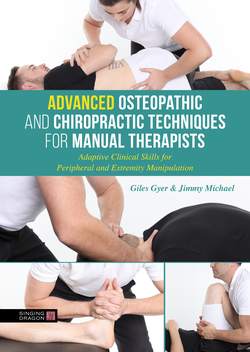Читать книгу Advanced Osteopathic and Chiropractic Techniques for Manual Therapists - Giles Gyer - Страница 19
На сайте Литреса книга снята с продажи.
Temporal summation
ОглавлениеThe effects of spinal manipulation on temporal summation of pain constitutes another experimental model that can be used to explain the mechanisms of manipulation-induced hypoalgesia. Temporal summation refers to an increased perception of pain evoked by repetitive painful (noxious) stimulus of the same amplitude and frequency. It represents a psychophysical correlate of a frequency-dependent, progressively increasing excitability of dorsal horn neurons (i.e., wind-up) (Anderson et al. 2013). Wind-up is an interesting model to study for manual therapy researchers, as it is a central phenomenon and not mediated by peripheral mechanisms (Herrero, Laird and Lopez-Garcia 2000). The constant nociceptive input into dorsal horn neurons through temporal summation can trigger transcriptional and translational changes that are related to the short-lived aspect of central sensitisation (Anderson et al. 2013; Staud et al. 2007). Thus, temporal summation can be used to characterise mechanisms of central processing in chronic pain conditions.
Early experimental studies (Bialosky et al. 2008b; George et al. 2006) done with cutaneous heat application to examine the effects of lumbar spinal manipulation reported immediate reduction of temporal summation in the lower extremity regions but not in upper limb dermatomes. This finding suggested that the hypoalgesic effects observed following manipulation might be regionally specific or segmental in nature. To confirm this hypothesis, Bishop, Beneciuk and George (2011) conducted a study to test whether thoracic spinal manipulation reduces temporal summation of pain. In contrast to earlier findings, they found that temporal summation was reduced in both upper and lower extremities, which suggested an involvement of both segmental and descending inhibitory mechanisms in manipulation-induced hypoalgesia. Recently, Randoll et al. (2017), using repeated electrical stimulus, also found that temporal summation of pain was reduced by thoracic spinal manipulation. The authors supported an involvement of segmental mechanism and suggested that deep high-threshold mechanoreceptors might be responsible for HVLA-induced hypoalgesia. However, further research is needed to establish the clinical relevance of these findings.
